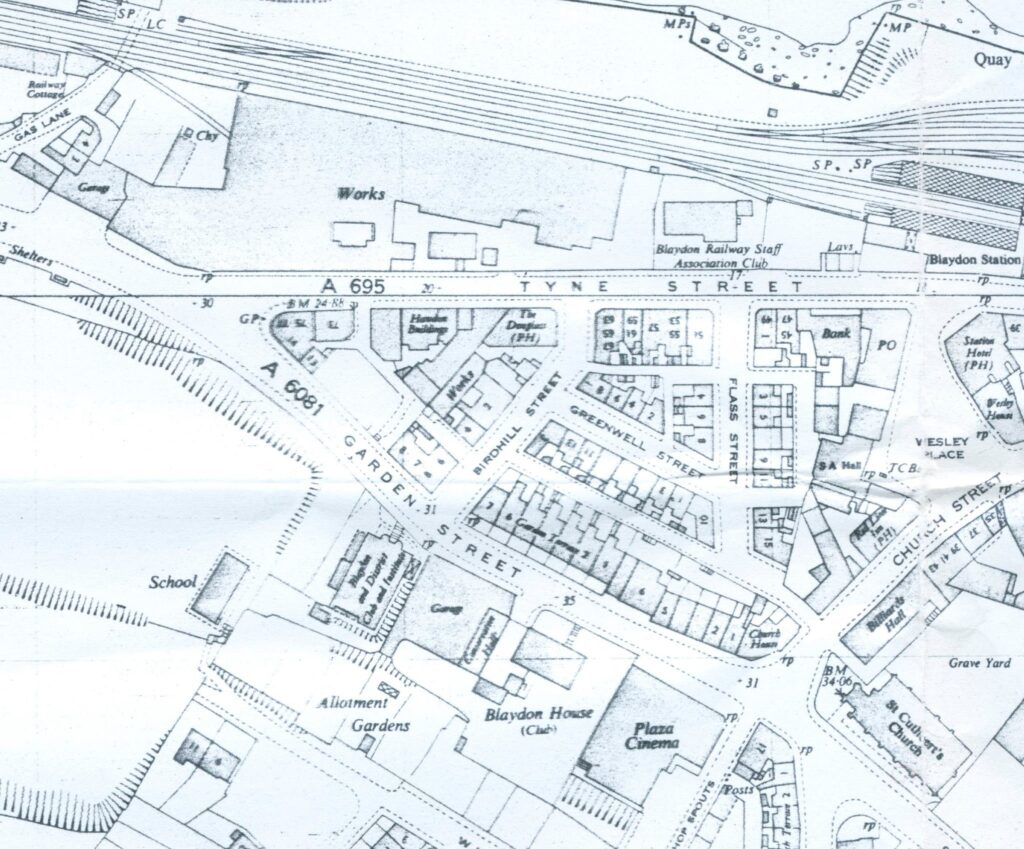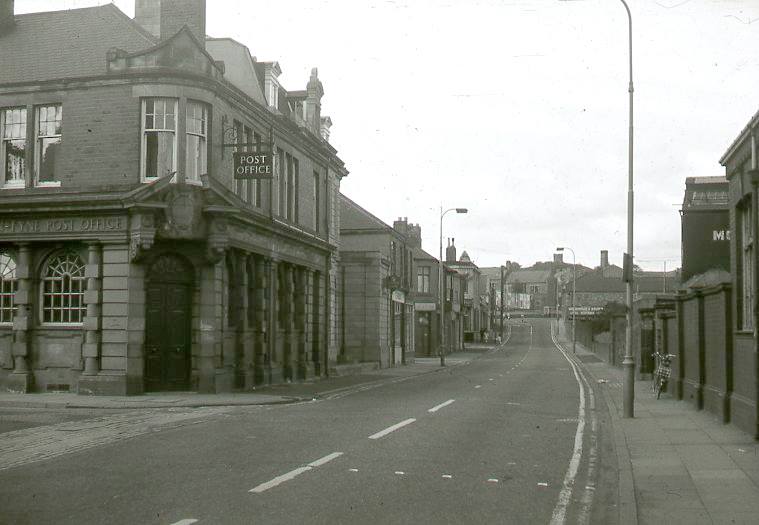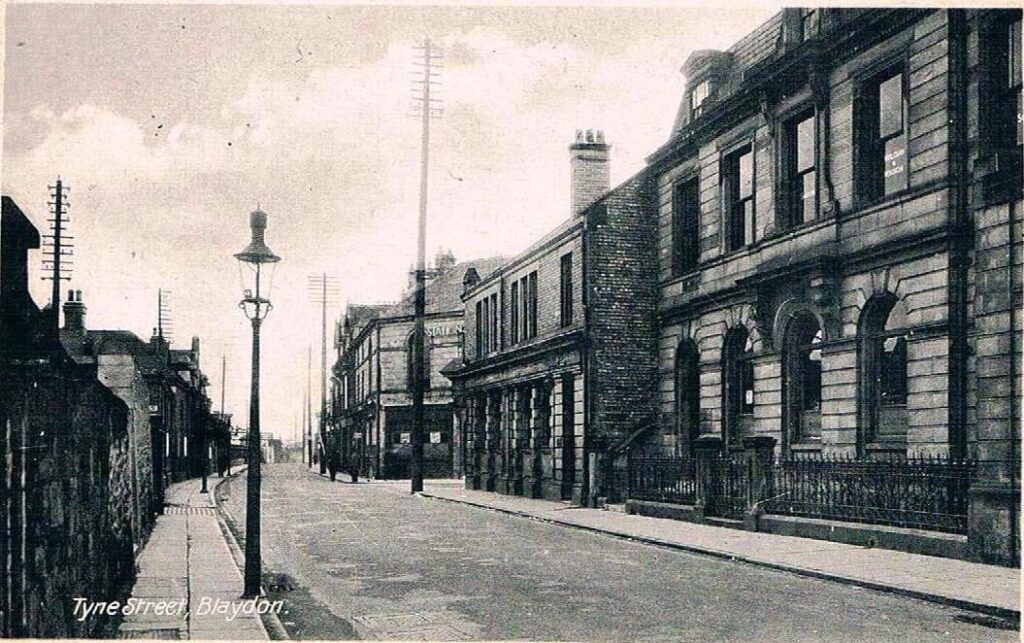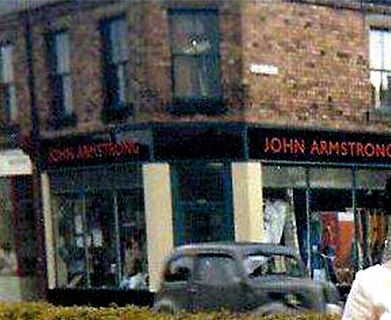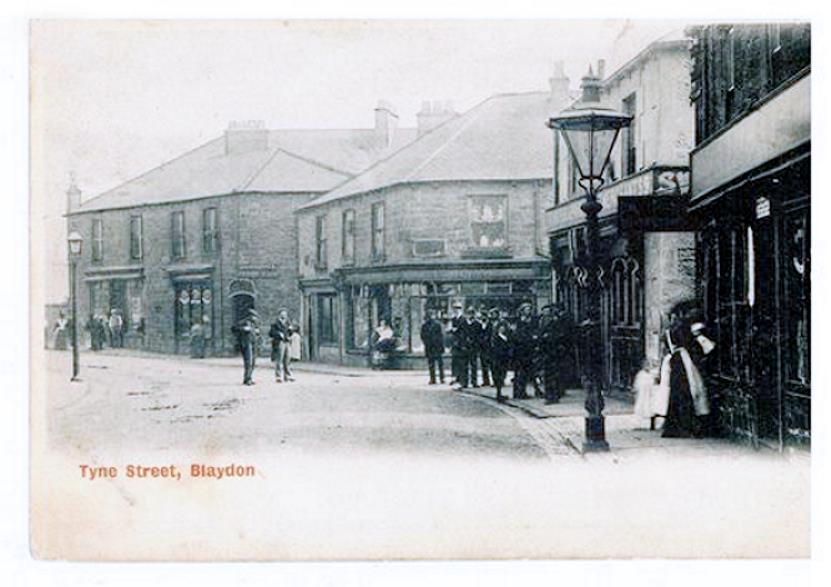The Martin’s Memories series has been reproduced with the very kind permission of Tony Martin from his posts on the Old Blaydon and Old Winlaton Facebook group.
OLD Blaydon and OLD Winlaton | MARTIN’S MEMORIES 22 | Facebook
In the last instalment, we made our way from the crossings to the Station Hotel. Today we cross over the road from the Station Hotel to the Post Office and continue our way up the remainder of Tyne Street. The Post Office was an imposing building as befitted its position in the community. Next to it was another solid building which housed the Blaydon branch of Lloyds Bank. The same building also housed the Registrar of Births, Marriages and Deaths, a solicitor’s office and the local office of the Refuge Assurance Company.
Next to this was the draper’s shop owned by John Armstrong on the corner of Flass Street and Tyne Street. John Armstrong I remember as quite a small man with glasses. He lived in Thorneyholme Terrace. My mother had worked for John Armstrong before her marriage and because she lived in the Avenues, she shuttled between the Tyne Street and Sandhill branches. The staff called the owner for “Wee John”. She often visited the shop, not only for purchases but to chat to one of her former workmates – “Auntie” Connie Andrew, who lived at Crookhill and had a son called Andrew, which I always considered to be a bit peculiar. The shop was later managed by Armstrong’s son, Leonard who lived in Monarch House. He was a rugby player and played for Old Novos. I also visited the Armstrong home with Judith Graham and her brothers because John Armstrong’s daughter was married to Robert Graham of Primrose Coaches who lived opposite us in Rydal Mount.
On the opposite corner of Flass Street was the town’s main ironmonger, Jackie Rogers. This shop had a very distinctive smell that I always associated with old time ironmongers. The staff were always very helpful and ready to give advice before purchase. He was also considered a local worthy, because although he was not involved in local politics, he was respected by many for his charitable work during and after the war, when he was involved with the Welcome Home Committee. On the opposite side of Tyne Street one had the goods entrance to the railway station, a public toilet of dubious cleanliness and then the Railway Staff Club.
Continuing up to the next corner – that of Birdhill Street and Tyne Street, there were a number of small shops, of which the only one I remember was Greensitt the greengrocer. It was the same family as the builder of the same name who built Thornton Crescent. There was a daughter, Thelma, a few years older than me, who went to Blaydon Grammar School. The other premises in this block are a complete blank as far as my memory of them is concerned largely because I never used them and rarely passed them.
Birdhill Street had the Douglass public house on the corner with Tyne Street and the premises of the pop manufacturer, Skidmores. In earlier days, a brother had been a photographer and some old Blaydonians might have studio portraits bearing his name. It was also the home of Warwick the carrier. On several occasions I was sent to the house on a message mainly for Uncle Stephen and was always greeted by the daughter, Nora, who drove the canvas covered lorry and never seemed to wear anything else but dungarees. She was very agile and jumped up and down from the lorry as if it was second nature.
Opposite the Douglass was the large factory owned by Browns. It was formerly known as Harfields and had suffered a direct hit during the war. It had formerly been the Blaydon Iron Works and there had been another part of the factory on the area of rough ground below Delacour Road at the bottom of Linwood Avenue, called the Foundry. There had also been a tunnel under the main road connecting the two parts of the factory, which stretched up the river side of Tyne Street as far as Humble’s garage.
The section between the Douglass and the junction of Garden Street and Tyne Street had the Blaydon Office of the Pearl Assurance Company, Beveridge the printer and Henderson’s TV and Radio shop. These buildings were referred to as Hawdon Buildings after a local family who eventually emigrated to Australia and for whom I did some family history research. The newsagent business on the corner was run by Flo Kirby, the wife of Arthur who was the manager of Lennards. I delivered papers for her for several years prior to my going to university. They had once lived in Polmaise Street, but moved to be above the shop when they took over this business. They also had a caravan on the Broomhaugh field at Riding Mill where our family had a holiday chalet. Opposite Humble’s garage, there were two bus stops for west travelling services….the United service to Branch End and Hexham and the Venture service to Ryton, Greenside and High Spen.
Photos:-
